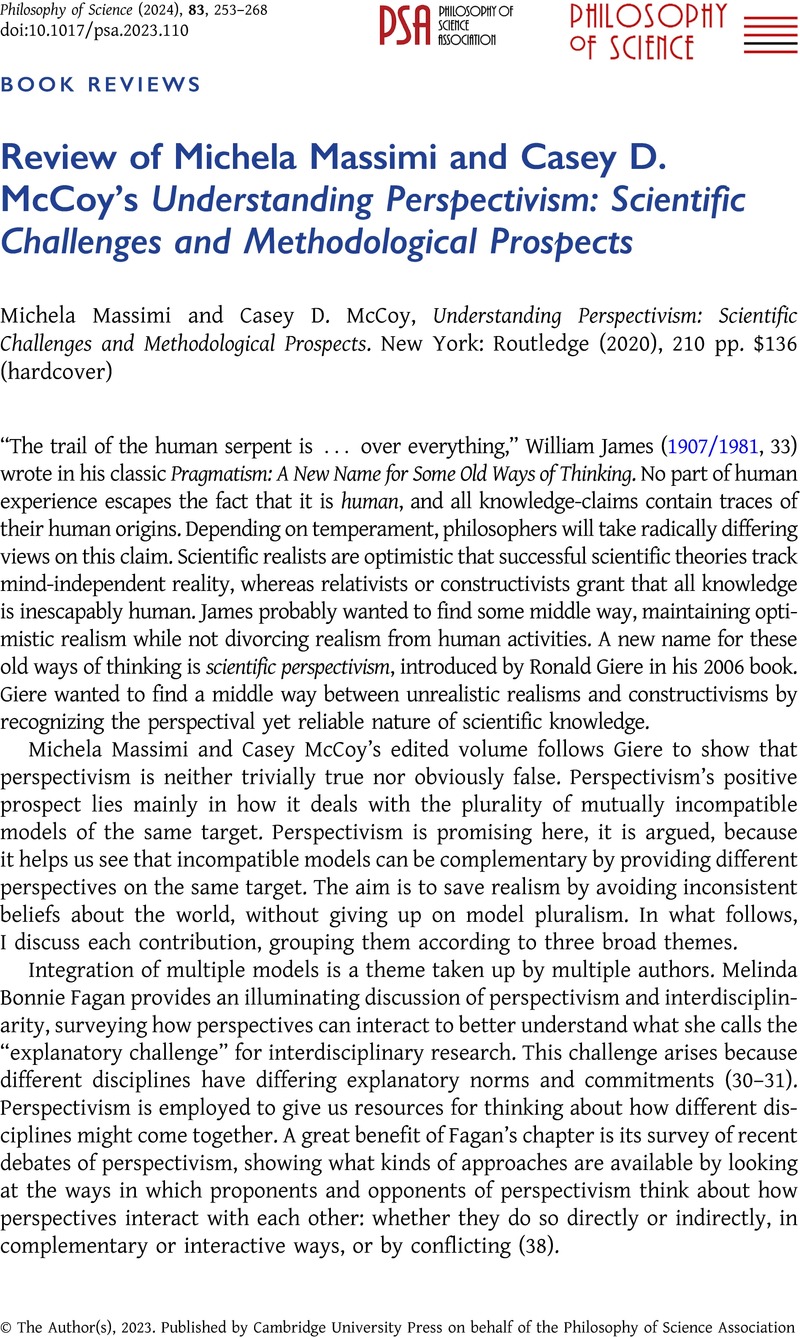No CrossRef data available.
Article contents
Review of Michela Massimi and Casey D. McCoy’s Understanding Perspectivism: Scientific Challenges and Methodological Prospects - Michela Massimi and Casey D. McCoy, Understanding Perspectivism: Scientific Challenges and Methodological Prospects. New York: Routledge (2020), 210 pp. $136 (hardcover)
Review products
Michela Massimi and Casey D. McCoy, Understanding Perspectivism: Scientific Challenges and Methodological Prospects. New York: Routledge (2020), 210 pp. $136 (hardcover)
Published online by Cambridge University Press: 28 September 2023
Abstract
An abstract is not available for this content so a preview has been provided. Please use the Get access link above for information on how to access this content.

- Type
- Book Review
- Information
- Copyright
- © The Author(s), 2023. Published by Cambridge University Press on behalf of the Philosophy of Science Association
References
Chirimuuta, Mazviita. 2016. “Vision, Perspectivism, and Haptic Realism.” Philosophy of Science 83 (5):746–56. https://doi.org/10.1086/687860.CrossRefGoogle Scholar
Giere, Ronald. 2006. Scientific Perspectivism. Chicago: University of Chicago Press. https://doi.org/10.7208/chicago/9780226292144.001.0001.CrossRefGoogle Scholar
James, William. 1907/1981. Pragmatism: A New Name for Some Old Ways of Thinking. Indianapolis, IN: Hackett.CrossRefGoogle Scholar
Massimi, Michela. 2018. “Four Kinds of Perspectival Truth.” Philosophy and Phenomenological Research 96 (2):342–59. https://doi.org/10.1111/phpr.12300.CrossRefGoogle ScholarPubMed


